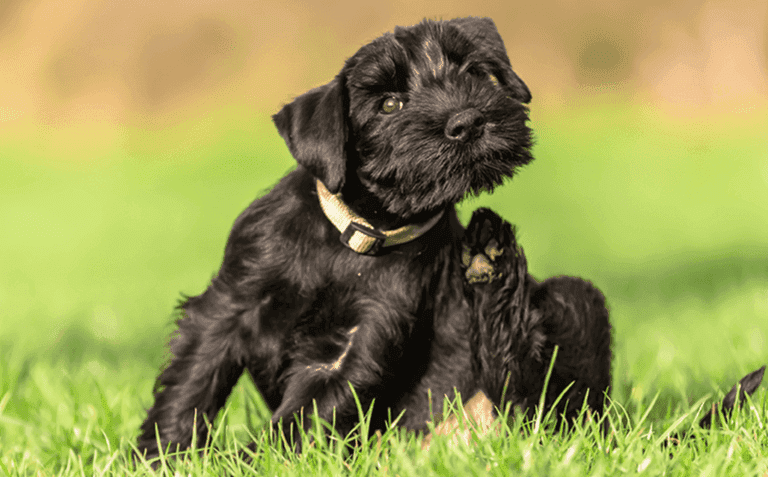
A grooming guide for your dog
This guide covers health benefits of grooming, types of grooming, bathing and nail clipping for your dog


What is dog grooming?
Every dog is unique – some love to play fetch, others just want to cuddle, some can’t wait to jump into the nearest water, while others prefer to curl up in the sun. Similarly, the amount you should groom your dog is unique to them. How often should you groom your dog? There’s no one-size-fits-all answer as different breeds have different needs, but here are our tips for a successful grooming routine, from the team at Animal Trust.
Dog grooming is the entire process of cleaning and improving dog’s hygiene and physical appearance. Grooming appointments most commonly include bathing, hair removal (cutting, shaving or trimming), nail clipping and general cleanliness.
Typically, the most common aspect of dog grooming is treating a dog’s coat. This can be to remove loose hair, care for curly and wavy coats, have dog hair trimmed, or generally tidy up a dog’s fur.


What are the health benefits of dog grooming?
Keeping your dog groomed doesn’t just mean they’ll be looking neat and tidy. Keeping up with a consistent grooming schedule can have lots of positive impacts on your pet’s health. Grooming can:
Prevent ear mites/fleas
Remove dead skin
Prevent skin irritation
Ventilate the skin
Get rid of dead hairs
Promote a healthy coat


How often does my dog need to be groomed?
To figure out your dog’s grooming needs, you’ll need to do a bit of research on their particular breed. The optimal grooming schedule can vary depending on things like coat length, fur texture, hair type and age.
If you’re not sure about the best schedule for grooming your dog, get in touch with a professional groomer for advice, or contact your vet at your nearest Animal Trust surgery.

Short-haired dogs
If your dog is a short-haired breed (for example Labradors, Staffies, Bull Terriers), you will likely be able to get away with minimal brushing. Many dogs with short hair usually only need brushing once a week if they have a healthy coat.
Because they have naturally short coats, they also won’t need very regular haircuts with a professional groomer. However, some different short hair breeds may need their undercoat to be trimmed.
Medium-haired dogs
For breeds such as German Shepherds and spaniels with medium-length hair, you may need to brush a little more frequently. With the right tools, you can brush a medium coat a few times a week in order to prevent matting and get rid of dead hair.
Depending on your dog’s breed, you may also need to visit a professional groomer to get their coat trimmed or stripped a few times a year. Of course, if you’re experienced in dog grooming you may wish to carefully trim your dog’s coat yourself, but we generally recommend professional grooming services.
Dogs with an undercoat or a lot of excess hair may benefit from hand stripping. This is a process where the undercoat (underneath the top layer) of a dog’s hair is removed using a hand stripping tool.
Long-haired dogs
For pet parents of long-haired breeds (for example some poodle mixes, Lhasa Apsos and long-haired terriers), you will need to think about much more regular grooming. This might involve daily brushing to smooth hair and prevent matting.
Similarly, if your dog is a breed which is particularly prone to shedding or matting, you’ll also need to look at daily brushing and regular grooming. How often you get your dog’s coat trimmed will depend on lots of things – the lifestyle you lead, how often they get out and about, their age, coat type, breed and more. Some breeds need their coats trimmed every few months, while others can go a bit longer.

How often should I bathe my dog?
Again, this will vary depending on your dog’s skin and fur condition. In general, dogs with a short smooth coat don’t need to be bathed any more than around every three months. Other breeds – such as silky coated dogs, pets who keep their hair longer or curly-haired breeds (for example poodle mixes) – may need extra grooming and more regular bathing of around every four to six weeks.
If they have healthy skin, it’s generally fine to give them a bath with dog-safe shampoo if they get particularly dirty or muddy. However, if your dog has a skin condition, it’s best to double-check with your vet before bathing them (or even before taking them to the professional groomers).
There are health benefits to not bathing your dog too often. For example, there are natural oils in a dog’s coat that keep it healthy, and anything more than occasional baths can cause dry skin.

Many dogs will find that their nails or claws wear down naturally (particularly if they walk on pavements or tarmac surfaces frequently). However, some breeds may still need them clipping or trimming – this is also the case for dogs with reduced mobility or particularly bowed legs.
Rather than using human nail clippers, if you’re going to trim your dog’s nails yourself it’s recommended to get specific pet-safe clippers. Having the right tools is an essential part of keeping your dog groomed!

Top tips for dog grooming
If you are grooming your dog yourself, make sure you have all the proper tools. For example, invest in proper professional groomers’ scissors rather than just using regular ones!
Pay particular attention to sensitive areas and be extra careful when cutting around there.
Use treats! Use treats as a reward, and encourage your dog to sit or stand still during grooming.
Brush your dog’s coat regularly, to make sure you work out any knots and make grooming easier.
Pay particular attention to sensitive areas and be extra careful when cutting around there.


